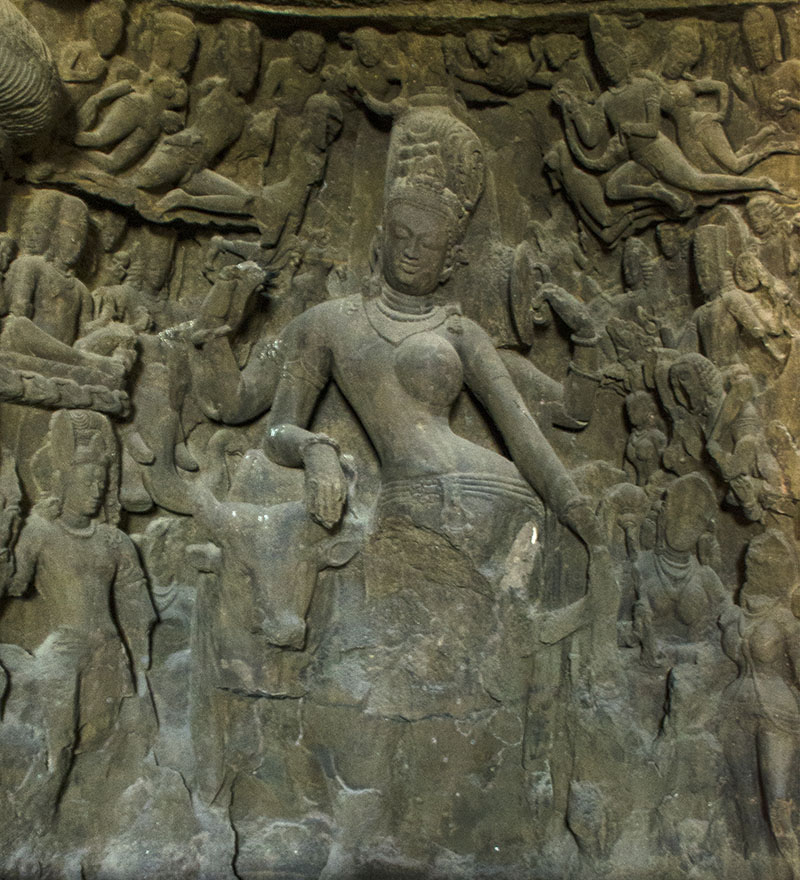ARTICLE
Ardhanarishvara, Elephanta Cave 1
The Elephanta Ardhanarishvara deviates from the iconography prescribed in the Matsya Purana and the Shiva Purana, specifically in the absence of the abhaya mudra, the varada mudra and the trident in any of his hands. Due to the damage to the figure’s legs, it is unclear whether the prescribed tiger-skin garment and ithyphallus were included. Additionally, the Puranas describe Ardhanarishvara as a fierce being, but the figure in Elephanta is depicted as serene.
The idea of femininity or fertility as an energy channelled by Shiva in this form is a possible reason for placing why this relief and Gangadhara are placed on either side of the three-headed Sadashiva, who is the main icon of Cave 1. The image of Ganga flowing through Shiva’s locks in the Gangadhara relief suggests a fertility external to the god, whereas Ardhanarishvara possesses an internal, assimilated fertility. Both therefore suggest two depictions of how Shiva is believed to interact with the creative energies of the goddess.
The Elephanta Caves were designated as a UNESCO World Heritage Site in 1987. Prior to that, major restoration and structural reinforcement was conducted in the 1970s, although many figures such as the Ardhanarishvara had already suffered permanent damage.
Bibliography
Our website is currently undergoing maintenance and re-design, due to which we have had to take down some of our bibliographies. While these will be re-published shortly, you can request references for specific articles by writing to hellomapacademy@map-india.org.








